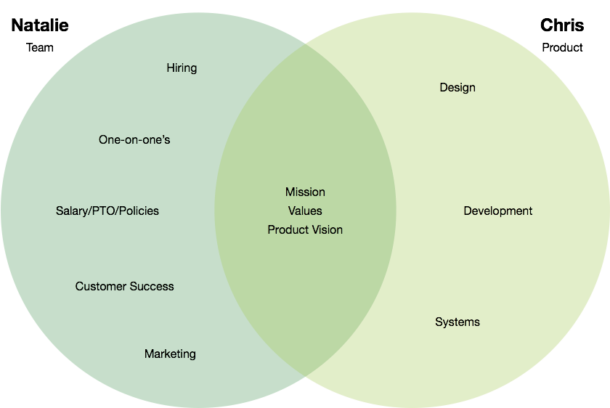We didn’t start a business or build products in the hopes of leading people. Most founders started because they wanted to build or create something. In all industries, entrepreneurs don’t start out because they desire to rule. A florist starts a small flower shop on her own, and then as demand grows, hires her first employee, and becomes someone’s manager.
On the other hand, many managers exist today because they were promoted to that position. You know, promoted to their highest level of incompetence. In good organizations, that may come with training and help on becoming an effective leader of your team. In bad organizations, they were placed in a role that doesn’t fit their strenghts and I feel bad for anyone that has to report to them.
But for us founders, it’s different. Many of us don’t want to be managers. We just want to keep building stuff, and let someone else deal with “people”. This is why it makes perfect sense to remove a founder from the CEO/COO roles once the team grows.
To be clear, managing and leading are two different things. You manage people (PTO, policies) and you lead a team (culture, vision). One person can do both, or you may need two separate people. But a lot of the time, managing people is not a personality strength of a founder. Leading a team requires 100% focus, so you can’t really build a product while leading a team (as you grow).
So what’s a founder to do? You have two choices, both of which involve a lot of soul searching. Think about the things that you love to do, the things that make you happy. Is it building a product, designing interfaces, thinking of product strategy? Or is it working with your people, making sure they’re happy, focused, organized. Making sure they have what they need to be successful. If it’s the former, find someone to replace the people part of your job, and quickly. But if you like it, and want to be a part of it, you can accomplish it yourself.
It’s clear why Chris started Wildbit 15 years ago. It was to create and build amazing things. I, on the other hand, love the people stuff. When we finally realized our team deserved more of our time in direction and management, we decided to split the responsibility. But when Chris needed to take time to do one-on-ones, he would feel like that day was spent getting nothing done. Clearly, he wanted to get down into the product with the team.
Chris and I have two mentors who have led teams in the past that are helping us navigate our way. We spent weeks recording all the things we do all day, and then organized them into thing we love and things we loathe. We shared that with one of our mentors, and he clearly defined some roles for us.
So our roles became more defined, CEO and CTO. Product development is where Chris thrives, and accepting that has made him much happier. The biggest challenge for us was to remove the predefined baggage that came with separating responsibilities, and making sure we were clear that company strategy was always a joint effort. That’s always up to the stakeholders, not just the CEO.

You may not realize the need to make such a decision at first. But as you grow, you need to be conciously thinking about your team and what’s best for everyone. Your accidental leadership means that you now have to learn a new skillset. You need to keep learning and improving to keep up.
And for me, leading a team is exciting and fulfilling. It’s a full time responsibility and not something I can do on the side. We only have 24 people, but it’s taking my fulltime attention to do an OK job at it. I have so much to learn and improve on. I can’t possibly focus on product development at the same time.

